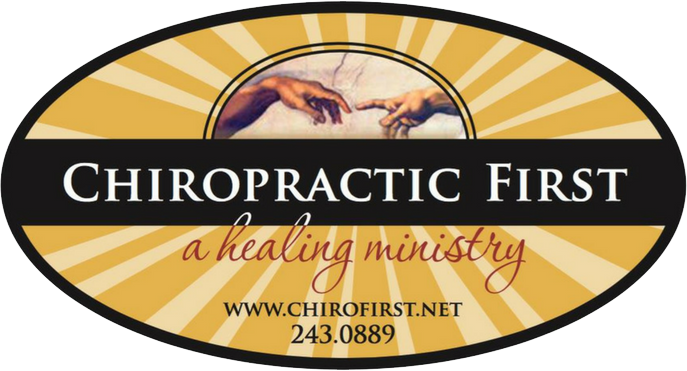Sciatica and Pinched Nerves: How Chiropractic Care Can Help You Regain Mobility
Sciatica and pinched nerves can cause debilitating pain and restrict mobility, affecting daily life. Chiropractic care offers a natural, non-invasive solution to these issues. By focusing on spinal adjustments, chiropractors can relieve pressure on the sciatic nerve, reduce inflammation, and promote healing.
Whether your pain stems from an injury, poor posture, or spinal misalignment, chiropractic treatments can help you regain mobility, improve flexibility, and reduce discomfort. Don’t let sciatica or pinched nerves hold you back – learn how chiropractic care can help restore your body’s natural balance and get you moving again.
Understanding Sciatica: More Than Just Back Pain
As a chiropractor with over a decade of experience, I’ve seen countless patients struggling with sciatica, the longest nerve in the body. This condition occurs when pressure on the sciatic nerve, typically affecting one side of the body. Think of your sciatic nerve as a garden hose – when it gets pinched or compressed, the flow gets disrupted, leading to those uncomfortable symptoms you’re experiencing.
Common symptoms of sciatica include:
- Shooting pain from your lower back down your leg
- Numbness or tingling sensations
- Difficulty moving or reduced range of motion
- Pain that worsens when sitting
The Hidden Culprits Behind Your Nerve Pain
In our practice, we frequently see sciatica caused by various factors. The most common culprit? A herniated disc putting pressure on the nerve. It’s like having a squished jelly donut pressing against an electrical wire – not a comfortable situation! Other causes include:
- Spinal stenosis (narrowing of the spine)
- Muscle spasms
- Poor posture (yes, that desk job might be partly responsible!)
- Excess weight putting strain on your spine
- Chronic stress leading to muscle tension
Pinched Nerves: When Your Body Sends SOS Signals
Nerve compression can occur anywhere in your body, but we commonly see it in the neck, shoulder, and lower back regions. Think of your nerves as the body’s communication highways – when they’re compressed, the messages get scrambled, leading to pain, numbness, and other uncomfortable symptoms.
The Chiropractic Approach: Getting to the Root Cause
As chiropractors, we don’t just mask the symptoms – we work to identify and address the root cause of your pain. Our treatment plan typically involves several key components:
- Spinal Manipulation: Gentle adjustments to realign the vertebrae
- Non-invasive Techniques: Focused on reducing inflammation
- Customized Exercises: To strengthen supporting muscles
- Lifestyle Recommendations: To prevent future episodes
What Science Says About Chiropractic Care for Sciatica
According to the Journal of Chiropractic Medicine, chiropractic care has significantly reduced pain and disability associated with sciatica. As a non-invasive treatment option, it’s often recommended before considering more aggressive interventions.
See more: Relieving Migraines and Headaches with Chiropractic Care
Your First Visit: What to Expect
When you first visit our office, we’ll conduct a thorough examination to understand your specific condition. This includes:
- Detailed medical history review
- Physical examination
- Range of motion testing
- Nerve function assessment
- Development of a personalized treatment plan
The Power of Prevention
We believe in empowering our patients with the knowledge to prevent future episodes. Here are some key preventive measures:
- Maintain Good Posture: Think tall, like there’s a string pulling you up from the crown of your head
- Stay Active: Regular exercise helps keep your spine healthy
- Mind Your Lifting: Bend at the knees, not the waist
- Take Regular Breaks: If you sit for long periods, stand up and stretch every hour
Comprehensive Care Approach
In many cases, we recommend combining chiropractic adjustments with other therapeutic approaches. This might include:

Treatment Timeline and Expectations
Every patient’s journey is unique, but typically, we see improvements within 3-6 sessions. Some patients experience relief after their first adjustment, while others may need more time. The key is consistency and following through with your recommended treatment plan.
A Note About “Chiropractic First”
Remember, chiropractic care offers a non-invasive, drug-free approach to managing sciatica and pinched nerves. Before considering more aggressive treatments, why not try this conservative approach? We aim to help your body heal naturally and restore proper nerve function.
Did you know? Studies suggest that patients who choose chiropractic care first often experience better long-term outcomes and fewer complications than those who immediately opt for more invasive treatments.
Remember, your body has a fantastic ability to heal itself when given the proper support. As your chiropractor in Redding, I’m here to help guide that natural healing process and get you back to living your best life.
Frequently Asked Questions
How long does it typically take to see results from chiropractic care for sciatica and pinched nerves?
While results can vary, many patients experience significant relief from pain and improved mobility within a few weeks of starting chiropractic treatment. However, consistent care is often necessary for long-term benefits.
Can chiropractic care help prevent future episodes of sciatica or pinched nerves?
Yes, chiropractic care can help prevent future episodes by addressing underlying spinal misalignments and promoting overall spinal health. Regular adjustments can help maintain proper spinal function and reduce the risk of nerve compression.
Is chiropractic care safe for everyone?
Chiropractic care is generally considered safe when performed by a qualified chiropractor. However, it may not be suitable for individuals with certain medical conditions. It’s essential to consult with your doctor before starting chiropractic treatment.
How many chiropractic sessions are typically needed to treat sciatica or pinched nerves?
The number of sessions required can vary depending on the severity of the condition and individual factors. Many patients see improvement within a few weeks, but ongoing maintenance care may be necessary for long-term relief.
Can chiropractic care help with the numbness or tingling associated with sciatica or pinched nerves?
Yes, chiropractic care can help reduce numbness and tingling by addressing the underlying nerve compression. As spinal alignment improves and pressure on the nerve decreases, these symptoms often subside.


